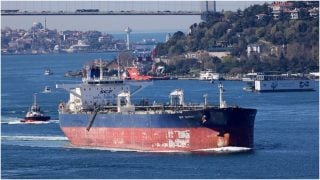
People emigrate as they can’t stand with good living conditions

We have numerously written that the main thing the government is sensitive about is statistics.
This fact was proven last week too. The world competition classified Armenia in the 106th place among countries with internet usage among 100 people. In total 144 countries participated in the survey. Armenia’s place is down by 38 compared to the statistics of last year.
This fact made the prime minister so angry that during a recent session of the government he instructed the minister of transport and connection Gagik Beglaryan to investigate and find out who provided that wrong information. For a country such as Armenia, where statistics is about manipulating information instead of reflecting the real situation, is almost a crime.
However, last week the statistics department published such great information about inflation, which cure the scars left in the hearts of the authorities as a result of that misinterpreted information. According to our statisticians, during 2000-2011 the consumer prices in Armenia grew by 66% only. Armenia is a leader with this low inflation rate among the CIS countries. According to this information, the least growth of prices has been observed in Armenia.
What did the NSS do? It has taken the index of consumption prices of 2000 as a base figure (100% point) and based on that they had presented the indexes of 2011. Armenia’s index amounted to 166 percent point. This being said, the consumption goods inflation in the CIS states amounted to 342. It means that in the CIS states prices went up 3,4 times and in Armenia – 1,6 times. Let’s mention that Azerbaijan has the second lowest inflation index (prices grew 2,2 times). In Kyrgyzstan this index is 2,38 times higher. During 2000-2011 the prices have maximum grown in Belarus – 9,5 times.
Index of consumption prices in CIS states:
2000=100
Armenia 166
Belarus 955
Kazakhstan 246
Kyrgyzstan 238
Moldova 267
Russia 353
Tajikistan 423
Ukraine 310
Azerbaijan 221
CIS, total 342
Any Armenian, who does shopping at least once a month, would be shocked by this figure. People feel the change of prices on their skins not annually but monthly, weekly and even daily. But now it turns out that life is much cheaper than we think. Let us present another index in order to make the comparison more comprehensive. According to the previous publications of the NSS, in 2000 in Armenia the medium salary for a month was 21,001 AMD. According to the NSS, this figure in 2011 amounted to 144,285 AMD. It means that the wages during 11 years grew 6,8 times and the prices only 1,6 times.
This is nothing more but actual growth of funds because people have started to gain more than they spend. This would mean that the country’s economy should have been more developed; the poverty level would have been reduced and the migration rates would have been close to zero. However, the official figure of poverty is currently 36%. In 2000 it was around 48%. It means that the level of poverty reduced by 13-percentage point. But based on the above-mentioned low inflation figures the poverty should have been reduced at least twice. And the theme of migration just doesn’t fit in the scheme of low prices and higher incomes.
People migrate in bigger numbers every year. However, we were supposed to have immigration. Let’s also note that the ones that migrate from Armenia are mostly socially vulnerable groups and according to certain expertise the level of unemployment slightly dropped here because 80% of people who emigrate are unemployed. But surprisingly, from Armenia even socially steady and economically stable groups migrate, which still maintains the high level of unemployment and outflow of intellectual citizens. Therefore the ratio of poor people doesn’t reduce. And this is a much deeper and more serious issue and is mostly connected with political, social and psychological factors.
By the way, let’s also add that we have compared these data of the NSS with the data of the World Bank. And everything looks right. Moreover, the WB data prove that during the 11 years Armenia’s inflation wasn’t 66% but 65,5%. Let’s also mention that in individual states the WB doesn’t conduct any monitoring of prices and mostly realizes on the official statistics of the state bodies of the respective states. And we all know how the official statistics of Armenia describe the actual inflation. For example, a few years back when the price for cheese grew by 20-25% overnight, it wasn’t included in the NSS report but then was swiftly “disguised.” The same can be said about sugar.
There are also other inexplicable indexes. For example, according to the last NSS report on consumption goods in Yerevan a kilo of high quality flour costs 405,5 AMD and in Vagharshapat, located not too far from Yerevan, the price is 286,9 AMD. Such a difference of prices can only between residential areas located thousands of kilometers far from each other. Or, for example, in Yerevan a liter of engine oil is 1242 AMD and in Artashat the same oil costs 752 AMD. This sounds like a very good business to transport oil from Artashat and sell it in Yerevan. Such examples can be continued but only this is enough to make a clear picture what the calculations are based on.
On the other hand, all this shouldn’t be taken too seriously. As we already mentioned, the NSS doesn’t reflect the reality but the expedient picture of reality in the form of positive indexes. And the indexes are not interesting to anybody besides the government and international organizations. The only surprising thing is why the statisticians of Armenia are not invited to other CIS states to conduct master classes.























